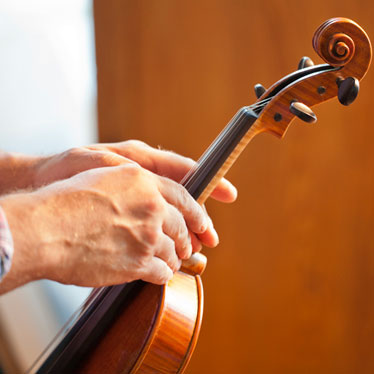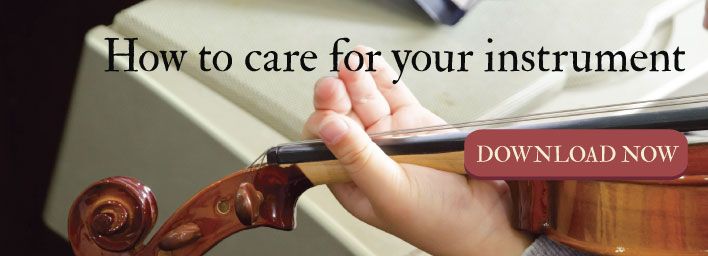
Your violin is an investment, able to offer years of playing enjoyment. Whether you’re a beginner or you’ve been playing for a while, taking good care of your instrument is important. And although many structural problems like cracks to the body, or Soundpost adjustments should be performed by a qualified luthier, there are many minor repairs that you can do yourself. All it takes is a little basic woodworking skill, a familiarity with your violin, and an extreme amount of patience.
These DIY fixes aren’t beyond the realm of possibility for most musicians, but there are a few things to keep in mind before you jump in and get started:
- Always use specialized hide glue on your violin, heated if possible—if for any reason the repair doesn’t work, a luthier can correct it. However, if you’ve used carpentry glue or an epoxy, the results can be seriously damaging. A luthier may not be able to remedy the problem and you’ll find yourself obligated to purchase a new instrument.
- If for any reason you aren’t sure about performing a repair yourself, don’t attempt it. It’s much less expensive to have a professional do it right the first time, rather than having to pay double to repair your repair.
DIY Repairs
Violins are carefully crafted and each one has its own unique voice. When performing these repairs, take your time and follow the instructions carefully.
Re-gluing Open Seams
- Remove the old glue, dirt, and residue without opening the seam further. You can use a small putty knife or similar tool. And, alternately moisten the glue with water and a small paintbrush between scrapings until it is completely removed.
- Heat Hide glue in a double boiler with an equal amount of water.
- Sparingly apply the heated glue to the seam using a delicate paintbrush. And, keep a moistened cloth available to wipe off any excess.
- Using a C-clamp with a protective piece of wood or a violin clamp, squeeze the seam back together and secure it. Wipe off any excess glue with a damp cloth first, then a dry paper towel.
- Allow the glue to cure overnight.
Loose or Detached Fingerboard
Use the same process as for gluing seams, but you may need two or more clamps to hold the fingerboard in place while the glue cures.
Peg Repairs
Don’t try to ream the holes on your pegbox yourself, allow a professional to do it. But, you can drill new holes in a tuning peg so that it can accommodate a certain string gauge.
- Unwind the string and remove the peg from the box.
- Using a clamp or some other method (not holding it with you hand) to stabilize the peg, drill a new hole for threading your string with a 1/16 wood bit. Go Slowly! Too fast and you can crack the peg.
- If that happens though, peg replacements are fairly inexpensive.
You can also make adjustments to the pegs if they’ve been sticking or are too loose with peg compound, but honestly, ebony replacements are very inexpensive. Just make sure that you are winding the peg correctly.
Bridge and Nut Replacements
Both the bridge and the nut can be a DIY project, but unless you’re prepared to perform a soundpost adjustment, you might want to leave these items for a luthier to repair.
Broken Corners/Chipped Edges/Gouges
If you have the broken piece, you can use the same gluing technique listed for open seams, but you might need to get a little creative with a clamp solution. Depending on the size of the piece and its location, you can use a heavy duty rubber band or a jeweler’s clamp to hold the piece securely while the glue cures.
For gouges or chips, you can apply a small amount of wood filler following its directions. However, the sanding process should be performed very carefully; you don’t want to make more scratches. And if you’re dealing with a large area, it’s best to trust a professional who will be able to match the finish as well.
You can make certain fixes to your violin on your own, but if you’re ever in doubt, always seek the opinion and services of a professional luthier. These individuals have spent years studying and performing the delicate tasks involved in violin restoration, and they have the equipment and expertise to solve your problem.


